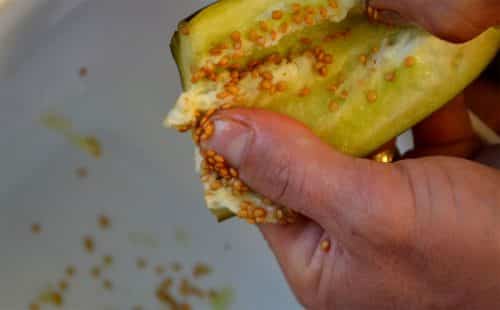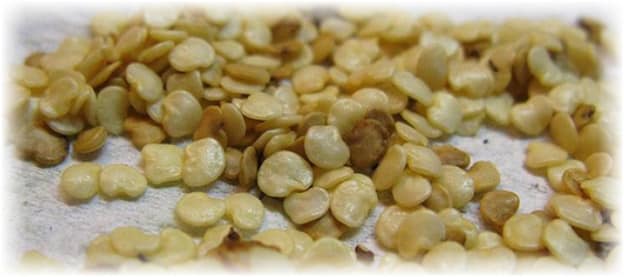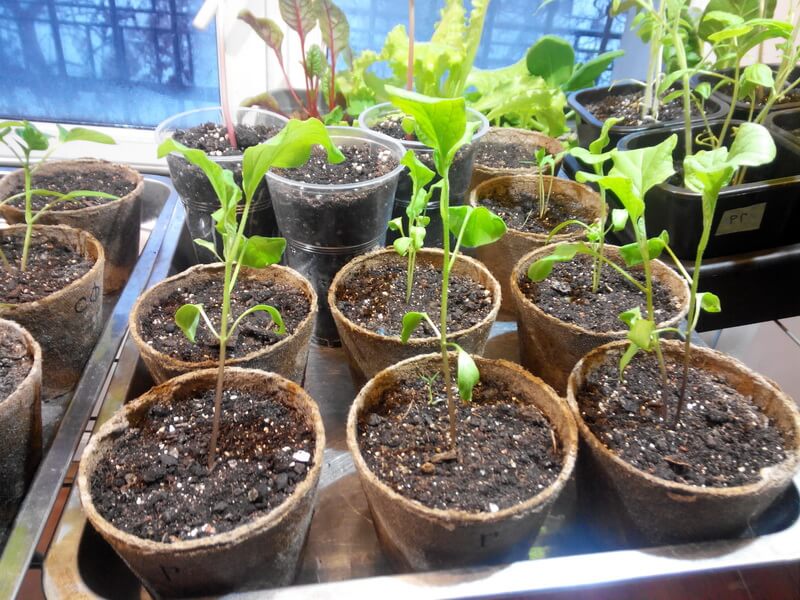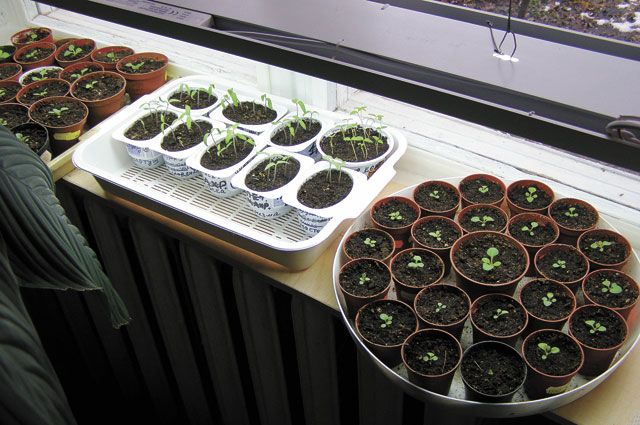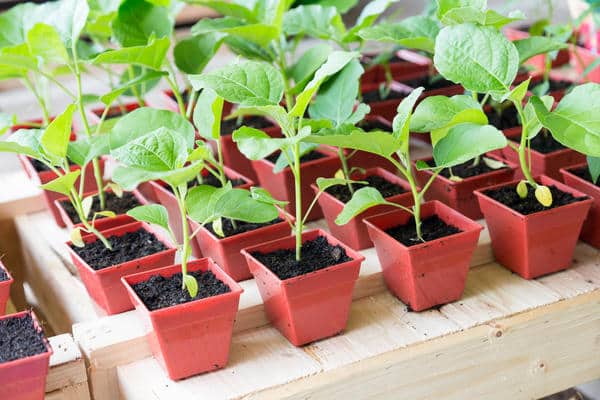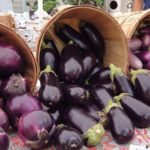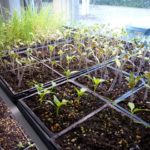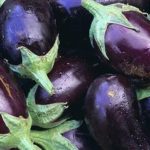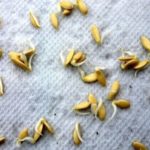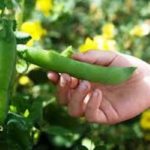Eggplants are native to Southeast Asia. But despite this, this vegetable is very popular in our country. And this is not surprising. Many eggplant varieties endowed with excellent taste, high yield and beneficial qualities of the fruit. You can use them to prepare a variety of dishes and preserves. However, not every gardener knows how to properly collect eggplant seeds. How this process is carried out and what is required for this will be described in detail below.
Collecting seeds
There are several ways to prepare eggplant seeds at home. Let's consider those options in which harvesting will be the least labor-intensive, and the quality of the future harvest will remain at a high level.
Methods for preparing seed material:
- The testis is crushed into several pieces. Grind individual parts of the eggplant through a fine sieve. In this case, the mass must be passed through so that only seeds remain on the surface of the mesh.
- The selected eggplants from which the seed material needs to be collected are cut into several thin slices. Then, carefully, using a fork, spoon or knife, remove the seeds.
Regardless of which method is chosen, after extraction it is recommended to rinse the seeds with running water. In this case, all seed material that floats to the surface must be discarded, since it is not suitable for further use.
Selection of eggplant
Experienced vegetable growers know that the quality of seeds directly depends on the seed plant. With the right approach to choosing eggplant, you can be confident in the vigor of germination, abundant fruiting and high marketability of the fruit. Moreover, from year to year the crop will adapt to the climatic conditions of the region, which will simplify plant care.
So, let's consider the rules for choosing a testis:
- For subsequent breeding of eggplants, it is recommended to focus on varietal crops. The fact is that although hybrid plants are endowed with high resistance to various diseases, they nevertheless lose their commercial qualities with further breeding.
- The characteristics of the variety must correspond to the climatic and soil conditions of the region. Otherwise, the testes will not have time to reach biological ripeness.
- To ensure that the quality of the seeds remains at the highest level, the seed must be selected only from strong and healthy crops. In this case, it is recommended to give preference to the first fruit formed.
- In order for the seeds to be sufficiently hard, the eggplant must be fully ripe. The stage of ripeness can be determined by the greenish-gray or yellowish-brown skin. If the fruit does not have time to ripen biologically, after removal, it is recommended to put it in a dark, cool place for ripening.
Despite the fact that there are certain rules for choosing a seed, the quality of the seeds is also influenced by drying and storage methods.
Seed drying and storage
Eggplant, unlike other nightshade crops, requires compliance with certain conditions that will ensure long-term preservation of the seed material. So, after the seeds are collected, they need to be thoroughly dried. The best option is to dry it in the fresh air, in a dark place.
If weather conditions do not allow, the seeds are laid out in a thin layer in a ventilated room on a sheet of paper. Typically, this process takes several days.
When the seed material is completely dry, it is necessary to create a combination of external factors that will ensure a long shelf life.
Eggplant seed storage technology:
- Tara. The best packaging for seed material is fabric bags or paper bags.
- Temperature. It is not recommended to store eggplant seeds in a damp place. The optimal temperature is +10-+15 degrees. In this case, it is necessary to exclude drafts, otherwise the planting material will become unusable.
If these requirements are met, the seeds do not lose their quality for 3-5 years. After the specified time has expired, it is recommended to replace them.
Growing eggplants from seeds at home
Eggplants are a rather fastidious crop that requires some care when growing. However, with effort, every gardener, using his own seeds, will be satisfied with the yield results and the high quality of the fruit.
The necessary conditions
Today, the consumer market offers early-ripening, mid-ripening and late-ripening eggplant varieties. Each species requires compliance with certain growing conditions. Thus, early and mid-ripening crops are intended for cultivation in the northern regions of the country, where the climate is quite harsh. These varieties are grown, as a rule, in greenhouses and greenhouse structures.
For more southern regions, gardeners choose late-ripening eggplants. Their growing season, from seed germination to biological ripeness of fruits, allows for harvesting in open ground.
Selection of container and soil preparation
Eggplants have a rather weak root system, which is severely damaged during transplantation. For this reason, gardeners advise using peat pots to grow seedlings.
As for the soil, it should be neutral in acidity and rich in nutrients. Therefore, if the land was taken from the place where nightshade crops previously grew, it is recommended to fertilize it with nitrogen and mineral fertilizers.
Preparing and sowing seeds
Before planting seeds, you first need to prepare the planting material. Such actions will help prevent the development of diseases and strengthen the root system of plants. Seed preparation involves disinfection measures. For this, a 5% saline solution is prepared. Then the seeds are dropped into it for 5 minutes.After the specified time has passed, they are washed with hot water for 20 minutes. Once the planting material has been prepared, you can begin planting it.
Seed placement technology:
- Peat pots are filled with prepared soil.
- The ground is thoroughly watered with warm water.
- A recess of 1-1.5 centimeters is made in each container.
- 1 seed is placed in each hole.
- Eggplant seeds are sprinkled with soil and watered by air-drip method.
At the end of planting, the pots are covered with film and placed in a warm, dark place.
Sowing care
A set of measures aimed at obtaining strong seedlings consists of creating favorable conditions for seed germination.
Crop care includes:
- Maintaining temperature +25-+27 degrees.
- Preventing the soil from drying out.
In this case, it is necessary to ensure that the soil does not become waterlogged. If there is a sufficiently large amount of moisture, the film must be removed from the pots. Otherwise, with the additional greenhouse effect, the seeds will inevitably die.
Seedling care
When the first sprouts of seedlings appear, the container must be moved to a warm, bright place, with a temperature of +20-+23 degrees.
Subsequent agricultural techniques for caring for seedlings include:
- timely watering;
- loosening the soil;
- fertilizing with complex fertilizers.
Also, when growing seedlings, do not forget about diseases and pests.
Disease and pest control
To prevent the development of diseases or the harmful effects of pests, seedlings must be periodically inspected. If there are insects or deformation of plants, you should immediately take appropriate measures.So, in the fight against pests, experienced gardeners advise using folk remedies. The most effective method is to sprinkle the ground with wood ash, and it is recommended to spray the plants themselves with soapy water. If diseases occur, you can use decoctions or infusions of herbs, together with fungicidal or insecticidal agents.
If the above remedies do not cope with the problems that have arisen, it is recommended to use chemicals.
Harvest and storage
The period of biological ripeness of eggplant depends on the variety. On average, the first fruits can be harvested 25-40 days after flowering. You can also determine the ripeness of eggplants by the color of their skin. As a rule, it acquires a characteristic color for a given variety. In this case, the pulp of ripe fruits becomes quite elastic, and the seeds turn white.
Harvesting is carried out quite carefully, using a knife or pruning shears. The fruits are cut off along with the stalk; a “tail” 3-5 centimeters long is left.
In order for the harvested crop to remain fresh for a long time, it is recommended to store it in a cool, dark place at a temperature of 0-+2 degrees. After 2-3 weeks, it is necessary to sort out spoiled and deformed fruits. Whole eggplants should be wiped with a dry cloth.
As you can see, the process of collecting seeds and their further cultivation is a rather labor-intensive process. However, using the tips given and making every effort, even a novice gardener will be satisfied with the quality of the harvest.

